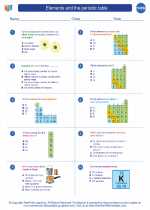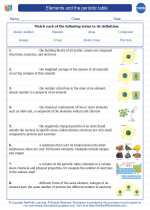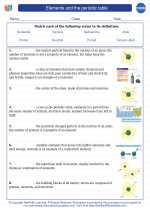Argon
Argon is a chemical element with the symbol Ar and atomic number 18. It belongs to the noble gases group in the periodic table. Here's a detailed study guide to help you understand argon better:
Properties of Argon
Argon is a colorless, odorless, and tasteless gas at standard conditions. It is the third most common gas in the Earth's atmosphere, making up about 0.93% of the atmosphere. Argon is present in the Earth's crust and is obtained as a byproduct of the production of liquid oxygen and liquid nitrogen. It has numerous industrial applications, including its use in incandescent and fluorescent lighting, welding, and as a protective gas in growing silicon and germanium crystals.
Atomic Structure
Argon has an atomic number of 18, which means it has 18 protons and 18 electrons. Its electron configuration is 1s2 2s2 2p6 3s2 3p6. This configuration gives argon a stable arrangement of electrons, making it a noble gas with very low reactivity.
Uses of Argon
Argon has several important uses, including:
- As a protective gas in welding to prevent oxidation of the metal being welded
- In incandescent and fluorescent lighting to prevent the filament or electrode from oxidizing
- In the semiconductor industry for growing crystals of silicon and germanium
- In the production of titanium and other reactive elements to create an inert atmosphere
Conclusion
Argon is an important element with a variety of industrial applications. Its stable and inert nature makes it useful in numerous processes where a non-reactive atmosphere is required.
.◂Chemistry Worksheets and Study Guides High School. Elements and the periodic table

 Worksheet/Answer key
Worksheet/Answer key
 Worksheet/Answer key
Worksheet/Answer key
 Vocabulary/Answer key
Vocabulary/Answer key
 Vocabulary/Answer key
Vocabulary/Answer key
 Vocabulary/Answer key
Vocabulary/Answer key
